#talcott mountain
Text
View from Talcott Mountain October 6th 2022, my narration 😁 do I have an accent?
@thethirdman8 💙
36 notes
·
View notes
Photo

Kate Avery, Hazy Day at Talcott Mountain
Oil on board, 30cm x 22cm
2K notes
·
View notes
Text
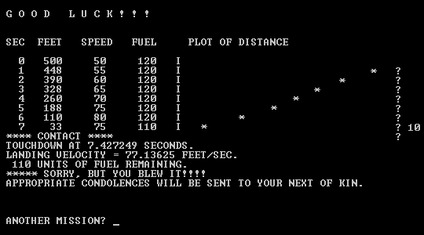
This is the kind of Lunar Lander game I remember playing as a kid in the mid 70s, perhaps my first interaction with a real computer. It was running on a PDP-11 (I am guessing) at the Talcott Mountain Science Center in Avon, Connecticut.
This place is a former Nike missile radar station, decommissioned in the late 60s. You drove for several miles through the woods, past the abandoned mounting pads for the radar antennas, to reach the site at the top.
Lunar lander itself is a simplistic game, you enter a fuel burn time each round and adjust it based on your velocity and remaining fuel, and try to reach the surface with as little delta-V as possible. (Usually with an amusing message if you failed)
Although this was text-only and you had only one input to give, the physics being modeled was real, and for me it was quite an immersive experience.
It was only a couple years after people had actually landed on the moon, and getting the chance to drive a lunar landing simulation on a real computer at a science center that was once a missile base, well that was astronaut stuff as far as preteen me was concerned.
I don't know that I have ever had as compelling a gaming experience since.
202 notes
·
View notes
Text
On Sept 20th we venerate Ancestor & Hoodoo Saint John Henry on the 153rd anniversary of his passing 🕊
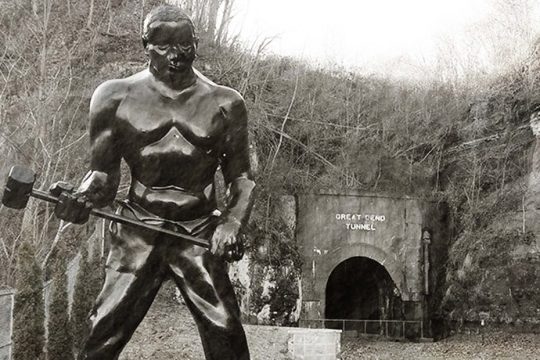
An icon of Hoodoo Folklore & History, John Henry - aka the Steel-Driving Man - embodied the otherworldly strength & will that defied physics, expectation, & the harsh conditions of his time. He is a symbol of Black Power as an unbreakable spirit of resistance and protest.
John Henry was indeed a real man behind the lore of his legend. Though there is still much debate as to who was THE John Henry among many possibilities. As it stands, most scholars believe he was born enslaved in VA in 1840’s, later emancipated after the Civil War. He stood at 6ft tall, 200lbs - a true giant of his time. He carried a beautiful baritone voice & played the banjo. That would make him the 19yr old who was convicted of theft in a VA court in 1866. For his alleged crime, he was sentenced to 10 years in the penitentiary & put to work building the C&O Railroad during the Reconstruction Era.
In the February 1870, the legend of John Henry was born along the C&O Railway at Big Bend Mountain near Talcott, WV - when over 1,000 railroad workers began drilling the Great Bend Tunnel where the Greenbrier River makes a seven-mile meander around the mountain. John Henry was a "free Negro" hired as a Steel-Driver on the C&O Railway. He & his counterparts were saddled with the gruesome task of hammering steel drills into rock to holes for explosives to cut a 6,450 ft-long tunnel through the mountain. Railroad work was hard; long hours of grueling labor, dangerous at times, for little money.
Holes were drilled into the layers of rock using a hand drill & hammer, then filled with powder & blasted in order to make the rock small enough to remove from the tunnel. The drill was held by a “Shaker” - tasked with turning it slightly after each blow & shake it to flip the rock dust out of the hole. The “Steel Driver” swung the hammer as hard & as often as he could, pounding the drill into the rock. John Henry was prolificly known as the strongest, fastest, & most powerful man working on the railroad.

One day, the C&O railroad company bought a steam drill. It was said that the steam drill could drill faster than any man on earth. This sparked the age-old debate & challenge of Man-versus-Machine. John Henry immediately volunteered to go up against the machine to prove that the Black worker could drill a hole through the rock farther & faster than any drill could.
John Henry wielded two 10-14lb hammers, one in each hand. He pounded the steel drill so hard & fast that he drilled a 14ft hole into the rock. The steam drill only reached 9ft. John Henry held up his hammers in triumphant victory. Nearly a thousand railroad workers shouted & cheered his name. So much so that it took them a while before realizing that John Henry was tottering. Exhausted, he crashed to the ground with his hammer at his sides. It is said that the crowd went dead silent as the foreman rushed to his side. John Henry had passed away from exhaustion due to bursted blood vessels in his brain.
The Great Bend Tunnel was eventually completed on September 12th 1872, & remained in service until 1974. A life-sized, 750lb bronze statue of his likeness was erected on Dec 28th 1972 - on the 100th anniversary of the completion of the Great Bend Tunnel. Barbed wire was placed around the statue for many years to combat vandalism of white paint being thrown on it, gun shots to the face and torso, etc.

Sadly, no one knows where John Henry was buried. Some say his likeness can be found carved into the rock inside the Big Bend Tunnel. Others say if you walk to the darkest edge of the tunnel, you can still hear the sound of two 10-14lb hammers drilling their way to victory.
"If I can't beat this steam drill down, I'll die with this hammer in my hand!"- John Henry, as told from The Ballad of John Henry.
John Henry's choosing to go up against the steam drill was not about the challenge in and of itself. It was about proving that the body & spirit of the Black man could NOT be broken. Especially while living in such hard, grueling times. Our livelihoods were at stake & our future was even more uncertain.
Thus, he is forever immortalized in the hearts & minds of our people as symbol of the blood, sweat, & tears that drench the C&O railway by Black railroad workers of the past/present. A beacon for those who lost their lives laboring under such dangerous occupation conditions. The lore of his legend (and the lives of Black workers lost) lives on in oral tradition through story, ballads, Blue's, & work songs from coast to coast. These songs and tales did more than transform John Henry into a folk hero, they reminded us to "slow down or die", which became a tool of resistance & protest among railroad workers.
John Henry was a legend turned symbol among the Black populace of the time. And an Ancestor turned Saint for us those of Hoodoo Culture.
We pour libations & give him💐 today as we celebrate him for his unbreakable spirit, unparalleled strength, & defiance against a system that see us all perish beneath its heel.
Offering suggestions: tobacco smoke, libations of dark liquor, railroad dirt (especially from the C&O railway tunnel/line), & sing/play ole rwork songs and ballads to his name.
‼️Note: offering suggestions are just that & strictly for veneration purposes only. Never attempt to conjure up any spirit or entity without proper divination/Mediumship counsel.‼️
#hoodoo#hoodoos#atr#atrs#the hoodoo calendar#Hoodoo Folklore#Hoodoo History#Hoodoo Saints#hudu#john henry#steel driving man
113 notes
·
View notes
Text
Died With a Hammer in His Hand: Unpacking the Myth of John Henry
“John Henry said to his captain:
‘You are nothing but a common man,
Before that steam drill shall beat me down,
I’ll die with my hammer in my hand.’”
— “John Henry, the Steel Driving Man,” recounted by W. T. Blankenship
John Henry is one of America’s most well-known mythic heroes, immortalized in song, statue, postage stamp, and multiple movies (including a 2000 Disney animated short film which I vividly remember watching in elementary school). But if you’re unfamiliar with the legend, here’s a brief summary.
John Henry was a freed slave who found himself working for a railroad company in the years following the Civil War as a steel driver. His job was to drive a steel spike into rock so that dynamite could be placed in the resulting hole, thus opening up a tunnel through the Appalachians.
John Henry was the best on his crew, and he took pride in his work—so when a white salesman brought in a steam-powered drill, claiming that it could drill better than any man, he decided to challenge that claim. Henry entered into a contest with the machine to see who could carve out the deepest hole in the mountain in a single day.
His victory cost him his life.
Henry’s wife—sometimes named Polly Ann, sometimes named Lucy, sometimes not named at all—went to visit him on his deathbed that evening. In many versions of the ballad, Henry’s last words are a request for a glass of water. In other versions, he asks his wife to be true to him when he’s dead, or to do her best to raise their son. Many accounts say that he’s buried by a railroad, where “Every locomotive come roarin’ by, / Says there lays that steel drivin’ man” (lyrics from Onah L. Spencer).

Bronze statue of John Henry near Talcott, West Virginia, sculpted by Charles Cooper.
The general consensus among historians now seems to be that the ballad of John Henry is one such legend that has its roots in historical fact, although the particulars are long obscured by the centuries that have since passed. Henry was born into slavery in the 1840s or 50s, either in North Carolina or Virginia (some accounts of the ballad lend credence to the latter claim). As for how John Henry found himself working for the Chesapeake & Ohio Railway company, University of Georgia history professor Scott Reynolds Nelson posits in his book Steel Drivin’ Man that the man was sentenced to ten years in a Virginia prison for theft at only nineteen years of age, and that he was among many prisoners leased out by the state for labor.
Did you know that the 13th Amendment makes an exception for slavery which is used “as a punishment for crime whereof the party shall have been duly convicted”? (This practice continues to this day, and has become an industry worth tens of billions of dollars. Louisiana State Penitentiary, also known as Angola or simply “The Farm,” is a good place to begin if you’re wanting to look into chain gangs further.) John Henry the legend was a free worker who took on the backbreaking, often dangerous work of railroad labor under his own power and could demand any wage for his work, but John Henry the man may have lived and died in neoslavery.
Speaking of Henry’s death, most retellings of the myth say that he died of sheer exhaustion. Some add in the detail that it was his heart that gave out because he worked himself too hard. However, alternate theories have been proposed for how the man died. Some historians say it was a stroke that killed him, while others posit silicosis.
It’s this latter hypothesis which I find most intriguing. For those who aren’t familiar with it, the American Lung Association describes silicosis as “a lung disease caused by breathing in tiny bits of silica, a common mineral found in sand, quartz and many other types of rock.” It’s been an occupational hazard for construction workers since, well, the time of John Henry. What I find interesting are the implications for the narrative if the real Henry died of silicosis. In the folk ballad, Henry causes his own death by working himself too hard. On the other hand, the ones at fault if the man died of silicosis would be his employers—the ones responsible for the dangerous conditions he worked in.
So why would John Henry’s cause of death change during the transition from fact to legend?
The answer, as with many other fictionalized accounts of historical events, is that it simply makes for a more effective story. But not just that—a more effective message. So what might the ballad be trying to tell those who listen to it?
First, let’s think about who this song was sung by and for. The ballad of John Henry is a work song, its rhythm meant to help railroad workers stay and strike in sync, in the same way a drumbeat helps soldiers march in step. It’s been sung by railroad workers, miners, construction workers, chain gangs, and country musicians. At its core, then, the ballad is a song of and for the American working class—specifically those people doing the same sort of backbreaking physical labor as John Henry himself. Many of these laborers would have been Black, and likely former slaves—especially when it came to Southern chain gangs. (See my above note about how American slavery was only mostly abolished, and then think about why the U.S. has one of the highest incarceration rates in the world. . . but I digress.)
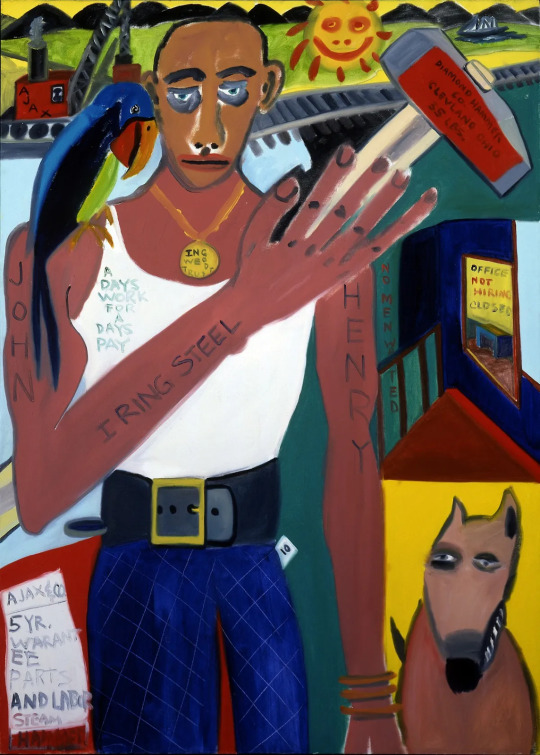
An oil painting of John Henry by Frederick Brown.
We’ve established that John Henry is a hero for working-class Americans during the time of the Second Industrial Revolution. But what sort of hero is he? Is he like Achilles, a paragon of his country’s values and an example for the audience to aspire to? Or is he an Icarus, a cautionary tale sung so the audience won’t repeat his mistakes?
The answer depends on who’s telling the story.
Onah L. Spencer is the source for one version which emerged from a Black community in Cincinnati, Ohio. When he recounted the lyrics to Guy B. Johnson for the latter’s 1929 book John Henry: Tracking Down a Negro Legend, he also stated that the song was used to motivate workers: “. . . if there was a slacker in a gang of workers it would stimulate him with its heroic masculine appeal.”
In cases such as Spencer’s crew, then, John Henry’s death is presented as glorious, and Henry is seen as admirable for working so hard that it kills him. Here, he’s a good example. Taken to the extreme, the Achillean Henry encourages fellow workers to follow in his footsteps—to keep pushing themselves harder and harder until they finally keel over.
This message doesn’t benefit the workers passing it along; it benefits the employers profiting from their labor. This, I think, is where the story blurs the line between myth and propaganda. And while the ballad of John Henry certainly isn’t singlehandedly responsible for the American tendency to overwork ourselves, it does reflect our attitudes about work in a way that’s worth unpacking. To me, this reeks of the Puritan work ethic. The belief was that you had to be working as often as you could; if you didn’t, the devil would be able to influence you. The Puritans were one of America’s foundational cultural influences—of course those values would have influenced the ballad of John Henry.
Henry is a hero because he worked himself to death. If we see him as a good example, what does this say about the effects that capitalism has had on American attitudes? About the internalized belief that our worth as humans only comes from what we can contribute to the economy? Why do we see death from exhaustion as a fitting end for a former slave?
Then again, maybe we’re not supposed to.

A lithograph of John Henry, from the series American Folk Heroes, by William Gropper.
Remember how I noted earlier that many of the laborers who first sang Henry’s ballad would themselves have been former slaves? It’s important because there’s a long history of American slaves using work songs as a tool of resistance against their oppressors, and these Black laborers—these “freed” slaves—would have carried that tradition with them into the Second Industrial Revolution.
The ballad of John Henry, then, might have been sung with the intent of helping other workers survive the brutal conditions on the railroads. Here, Henry becomes an Icarus—a warning of what happens if you push yourself too hard. One version of the ballad recorded by Edward Douglas of the Ohio State Penitentiary contains lyrics which suggest that not every Henry was meant to be emulated.
“John Henry started on the right-hand side,
And the steam drill started on the left.
He said, ‘Before I’d let that steam drill beat me down,
I’d hammer my fool self to death,
Oh, I’d hammer my fool self to death.’”
Don’t do what John Henry did, this version warns the audience. Be wiser than he was. Don’t push yourself quite so hard. Think of the people you’d be leaving behind if you’re not careful.
Perhaps even the creation of this mythos was an act of defiance in and of itself. At this point, I think it bears mentioning that I myself am not Black and can only hypothesize based on what I’ve heard from people who are, but I see something radical in the act of raising up one of your own as your hero rather than venerating the people you’ve been told are superior to you.
Remember, John Henry’s contest was versus a white man’s machine. It costs him everything, but he triumphs over the expectations of that steam drill salesman and proves his worth as a laborer and a person. John Cephas, a blues musician from Virginia who was interviewed by NPR for a report on John Henry back in 2002, had this to say of the myth:
“It was a story that was close to being true. It’s like the underdog overcoming this powerful force. I mean even into today when you hear it (it) makes you take pride. I know especially for black people, and for people from other ethnic groups, that a lot of people are for the underdog.”
Americans love underdog stories. Our own national origin myth is one! John Henry’s assertation of power and skill, the ballad’s declaration that Black people have the right to be proud of themselves too. . . no wonder this myth has resonated with so many people. No wonder it’s survived for a century and a half.
In this light, then, John Henry once again becomes a hero for us, the audience, to emulate. In the fight against oppression, endurance like Henry’s becomes key. Justice is almost never won quickly. The odds stacked against us may seem impossible, but it’s worth trying anyways, even if we have to fight to our dying breaths.
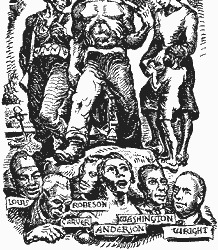
Artwork of John Henry as a defense worker by James Daugherty.
John Henry has meant and been many things to a lot of people in the past two centuries. A representative of capitalist exploitation, a cautionary tale for workers, an inspiration to oppressed people in America, even a communist icon—but I’d like to take a moment to talk about what his story means to me. It’s not something I’ve seen discussed in my research, and I think it’s worth exploring.
John Henry reflects fears of workers during the Second Industrial Revolution who saw how technology was evolving—how machines were being created that could do their jobs not just faster, but cheaper, because you don’t have to pay a machine like you would a person. They feared that they would be replaced, and that they would be left destitute while their former bosses grew richer and richer. And despite the centuries between us, this is a fear that I can understand.
Often, I feel it myself.
As an artist existing in online spaces during this new influx of AI-generated “art” and writing, I have witnessed many fears that we will be replaced by AI. Yes, there is a certain human quality to art that a generative learning model cannot replicate, but who’s to say that the much-vaunted free market will care? We can hope that art as a profession will survive, but we just don’t know.
In John Henry’s struggle, I see my own. In the steam drill salesman, I see tech bros on the platform formerly known as Twitter showing off their latest batch of beautiful, hollow, AI-generated “art.” I see John Henry’s passion, his pride, his triumph.
And I see hope.
By his life and death, the mythic John Henry reassures me that human beings aren’t so easy to replace after all. He tells me that machines can be defeated. That one day, my vindication as an artist and writer will come, and the world will see our worth.
The ballad of John Henry has endured like a mountain for a hundred and fifty years, and I hope it will survive for hundreds more—that John Henry’s hammer will continue to ring true throughout the ages. But in the midst of American mythos, it’s important not to lose sight of the historical facts behind it. Legends are interesting and inspirational and wonderful, but the real stories have something to tell us, too.
Don’t forget to listen.
Works Cited
American Lung Association - Silicosis
Ballad of America - This Old Hammer: About the Song
Constitution of the United States - Thirteenth Amendment
Encyclopedia Britannica - John Henry
Flypaper by Soundfly - The Lasting Legacy of the Slave Trade on American Music
Folk Renaissance - John Henry: Hero of American Folklore
How Stuff Works - Was There a Real John Henry?
ibiblio.org - John Henry: The Project
National Park Service - The Superpower of Singing: Music and the Struggle Against Slavery
NPR - Present at the Creation: John Henry
NPR - Talk of the Nation: The Untold History of Post-Civil War ‘Neoslavery’
PBS - Mercy Street Revealed Blog - Singing in Slavery: Songs of Survival, Songs of Freedom
Prof. Scott Reynolds Nelson - Steel Drivin’ Man: John Henry, the Untold Story of an American Legend
World Population Review - Incarceration Rates by Country 2024
#john henry#american mythology#analysis#essay#black history month#ari speaks#hi I wrote this for my english class and I felt compelled to share it here
13 notes
·
View notes
Text

Laboring at Big Bend Tunnel
New Jersey looms large in the history of Labor Day. Two labor organizers with roots in the state—Peter J. McGuire and Matthew Maguire—are often credited with being the first to propose the concept of a Labor Day holiday in the United States.
John Henry, legendary for his work on the railroads, was a nineteen-year-old who came from New Jersey as well, at least according to some historians. Many details of the folk hero’s life remain subject to historical dispute, but the ‘steel-driving’ freedman is widely lionized in ballads as a man who did battle with a steam-powered rock drill and won.
Steel drivers were laborers tasked with hammering dynamite holes into rock during the construction of railroad lines in the 1800s. As the legend goes, Henry—a freedman working on a tunnel on the Chesapeake and Ohio (C&O) Railway in West Virginia—was so strong and skilled that he set out to prove to the railroad companies that he could drill faster than a steam-powered drill, a new tool that threatened the jobs of steel-drivers at the time.
“Using two 10-pound hammers, one in each hand, he pounded the drill so fast and so hard that he drilled a 14-foot hole into the rock,” according to an account of the contest published by the National Park Service. “The legend says that the drill was only able to drill nine feet. John Henry beat the steam drill and later died of exhaustion.”

There isn’t consensus on where the reputed contest took place, but one of the leading candidates is Big Bend Tunnel (also called Great Bend Tunnel) in West Virginia. The 6,450-foot (1,966-meter) tunnel cuts off an eight-mile bend in the Greenbrier River, which winds around Big Bend Mountain before joining the New River to the west. The tunnel, built by over 800 men, many freed slaves and Irish immigrants, was the longest on the C&O line when it was completed in 1872.
On August 23, 2024, the OLI (Operational Land Imager) on Landsat 8 captured this image of the area where the tunnel bores through red shale in Big Bend Mountain. Cleared forest along the track is visible on either side of the tunnel’s east and west boreholes. The town of Talcott, home to the John Henry Historical Park and an eight-foot-tall bronze statue of John Henry, is visible to the east of the tunnel.
Despite the historical park and research that points to Big Bend Tunnel as the location of Henry’s feat, some scholars believe that Lewis Tunnel, 45 miles to the east in Virginia, is a more likely setting for the duel. Others think that it may have happened in the Coosa and Oak Tunnels in Alabama.
Whatever the location, the legacy of John Henry lives on in songs performed by Arthur Bell, Harry Belafonte, Bruce Springsteen, Gabriel Brown, Johnny Cash, Van Morrison, and many other musicians.
Few who have studied the legend believe Henry actually died of exhaustion during the contest. Others have suggested he died in a rock slide, from fever, or from the lung disease silicosis. Either way, his story has become a potent symbol of the sweat and sacrifice that American workers have given to build the United States into what it is today.
NASA Earth Observatory image by Wanmei Liang, using Landsat data from the U.S. Geological Survey. Photo by Dave Bieri, courtesy of the National Park Service. Story by Adam Voiland.
1 note
·
View note
Text
Holidays 4.8
Holidays
Aerosol Day
All is Ours Day
Baghdad Liberation Day (Kurdistan)
Bloating Prevention Day
Colorism Awareness Day
Counter Stool Memorial Day
Cushing’s Disease Awareness Day
Cuti Bersama (Indonesia)
DAB Day (Draw A Bird Day)
Day of Military Commissariat Employees (Belarus)
Day of Silence
Day of Valor (Araw ng Kagtingan; Philippines)
Dog Farting Awareness Day
Draw a Picture of a Bird Day
Drug Control Authority Workers’ Day (Kyrgyzstan)
Economist Day (Tajikistan)
Geranium Day (England)
Ghodejatra (Nepal)
Grand Ivy Day
Grand National Ladies Day (UK)
Ground Ivy Day
Hammerin’ Hank Day
International Bird Day
International Day of Pink
International Feng Shui Awareness Day
International Pageant Day
International Romani Day (a.k.a. International Day of the Roma)
Ja Morant Day (South Carolina)
Martyrs’ Day (Tunisia)
Ministry of Defense Day (Thailand)
More Cowbell Day
Mule Day
National Animation Day (Russia)
National Arcade Day
National Banjo Day
National Best in the World Day
National Catch and Release Day
National Dog Fighting Awareness Day
National Idiot Day
National Plitvice Lakes Day (Croatia)
Peanuts-Kids-Baseball Day
Polling Day Eve (Samoa)
Pygmy Hippo Day
Radish Day (French Republic)
Rex Manning Day (in “Empire Records”)
Right to Read Day
Rumenians’ Independence Day (Sweden)
Sealing the Frost (Cuchumatan Indians; Guatemala)
Shiatsu Day
Shiba Inu Day (Japan)
Step into the Spotlight! Day
Trading Cards for Grown-Ups Day
Tutor Appreciation Day
Twin Peaks Day
World Mixed Martial Arts Day
World Neurosurgeon’s Day
Zoo Lovers' Day
Food & Drink Celebrations
Milk in Glass Bottles Day
National Empañada Day
2nd Monday in April
Global Day of Action on Military Spending [2nd Monday]
National Lineman Appreciation Day [2nd Monday]
Weekly Holidays beginning April 8 (2nd Week)
Ora;, Head and Neck Cancer Awareness Week [thru 4.14]
Take Your Poet to School Week [thru 4.12 from 1st Monday]
Independence & Related Days
Australis (a.k.a. Grand Duchy of Australis; Declared; 2020) [unrecognized]
Rumenians' Independence Day (Romernas Nationaldag; Sweden)
Festivals Beginning April 8, 2024
Children’ Book Fair (Bologna, Italy) [thru 4.11]
Electric Mountain Festival (Solden, Austria) [thru 4.12]
NFRA Executive Conference (Tempe, Arizona) [thru 4.10]
Seatrade Cruise Global (Miami, Florida) [thru 4.11]
Feast Days
Ædesius (Christian; Martyr)
Allen Butler Talcott (Artology)
Anne Ayres (Episcopal Church (USA))
Apollonius (Positivist; Saint)
B. Albert, Patriarch of Jerusalem (Christian; Saint)
Barbara Kingsolver (Writerism)
Buddha's Birthday (Mahāyāna Buddhists; Japan)
Constantina (Christian; Saint)
Cornelius de Heem (Artology)
Day of Amon-Ra (Pagan)
Dionysius of Corinth (Christian; Saint)
Feast of the Hummingbird (Aztec)
Feast of the Three Days of the Writing of the Book of the Law begins (Thelema)
Freedom of Religion Day (Everyday Wicca)
Geronimo Day (Church of the SubGenius; Saint)
Hana Matsuri (Flower Festival on Buddha’s Birthday; Japan)
Juan van der Hamen (Artology)
Julie Billiart of Namur (Christian; Saint)
Kanbutsu-e (Buddha’s Birthday; Japan)
Kiki the Rattlesnake (Muppetism)
Lazarus Saturday (Orthodox Christian)
Nuzzle Quran (Malaysia)
Odd Nerdrum (Artology)
Our Lady of Good Counsel (Christian)
Perpetuus of Tours (Christian; Saint)
Prayer for Clarity Day (Starza Pagan Book of Days)
Red Wine Day (Pastafarian)
Walter of Pontoise (Christian; Saint)
William Augustus Muhlenberg (Episcopal Church (USA))
Zoo Day (Pastafarian)
Lucky & Unlucky Days
Nēmontēmi, Day 4 (of 5) [Aztec unlucky or fasting days, taking place between 4.5-4.18]
Sensho (先勝 Japan) [Good luck in the morning, bad luck in the afternoon.]
Unlucky Day (Grafton’s Manual of 1565) [19 of 60]
Premieres
All the Old Knives (Film; 2022)
American: The Bill Hicks Story (Documentary Film; 2011)
The Apocrypha (Religious Text received as Canonical by Catholic Church; 1546)
Bars and Stripes Forever (WB MM Cartoon; 1939)
The Boss (Film; 2016)
Box Car Bandit (Woody Woodpecker Cartoon; 1957)
The Century, by Peter Jennings and Todd Brewster (Book; 1999)
The Clash, by The Clash (Album; 1977)
David and Goliath, by Malcolm Gladwell (Book; 2014)
Destitively Bonnaroo, by Dr. John (Album; 1974)
Father Noah’s Ark (Disney Silly Symphony Cartoon; 1933)
Fever Pitch (Film; 2005)
The Fireman (Oswald the Lucky Rabbit Cartoon; 1931)
From Russia, with Love, by Ian Fleming (Novel; 1957) [James Bond #5]
The Gambler (TV movie; 1980)
Hanna (Film; 2011)
Have Gun, Can’t Travel (Woody Woodpecker Cartoon; 1967)
Inspector George Gently (UK TV Series; 2007)
Jerry the Lion (Tom & Jerry Cartoon; 1950)
Just Dance, by Lady Gaga (Song; 2008)
Killing Eve (TV Series; 2018)
Kingdom (BBC TV Series; 2007)
La Gioconda, by Amiliare Ponchielli (Opera; 1876)
The Little Engine That Could, by Watty Piper (Children’s Book; 1930)
Lucky Star (Anime TV Series; 2007)
The Mansion Cat (Tom & Jerry Cartoon; 2001)
Miss Lonelyhearts, by Nathanael West (Novella; 1933)
Mr. Right (Film; 2016)
On the Heights of Despair, by Emil M. Cioran (Philosophical Book; 1934)
The Organ Grinder (WB MM Cartoon; 1933)
Sea Salts (Disney Cartoon; 1949)
The $64,000 Question (Radio Quiz Show; 1955)
Smash by The Offspring (Album; 1994)
The Smurfs Springtime Special (Hanna-Barbera Animated TV Special; 1982)
Soul Surfer (Film; 2011)
Toys in the Attic, by Aerosmith (Album; 1975)
The Trouble With Being Born, by Emil M. Cioran (Philosophy Book; 1973)
Twin Peaks (TV Series; 1990)
The Unusuals (TV Series; 2009)
Von Drake in Spain (Disney Animated TV Special; 1962)
Where Did Our Love Go, recorded by The Supremes (Song; 1964)
Ye Olden Days (Disney Cartoon; 1933)
Today’s Name Days
Beate, Rose-Marie, Walter (Austria)
Lazar, Lazo (Bulgaria)
Diogen, Dionizije, Klement, Timotej (Croatia)
Ema, Emanuel (Czech Republic)
Janus (Denmark)
Julia, Juuli, Juulika, Lia, Liana, Liane (Estonia)
Suoma, Suometar (Finland)
Julie (France)
Beate, Rose-Marie, Walter (Germany)
Lazaros (Greece)
Dénes (Hungary)
Alberto, Dionigi, Walter (Italy)
Dana, Danute, Dziedra, Edgars, Žanete (Latvia)
Dionizas, Girtautas, Julija, Skirgailė (Lithuania)
Asle, Atle (Norway)
Apolinary, Cezary, Cezaryna, Dionizy, Gawryła, January, Radosław, Sieciesława (Poland)
Agav, Irodion, Lazar, Ruf (Romania)
Alla, Anna (Russia)
Albert (Slovakia)
Amancio, Dionisio, Julia (Spain)
Hemming, Nadja, Tanja (Sweden)
Gillian, Jill, Jillian, Jolyon, Julia, Julian, Juliana, Julianna, Julianne, Julie, Julien, Juliet, Juliette, Julio, Julissa, Julius (USA)
Today is Also…
Day of Year: Day 99 of 2024; 267 days remaining in the year
ISO: Day 1 of week 15 of 2024
Celtic Tree Calendar: Fearn (Alder) [Day 23 of 28]
Chinese: Month 2 (Ding-Mao), Day 30 (Ren-Yin)
Chinese Year of the: Dragon 4722 (until January 29, 2025) [Wu-Chen]
Hebrew: 29 Adair II 5784
Islamic: 29 Ramadan 1445
J Cal: 9 Cyan; Twosday [9 of 30]
Julian: 26 March 2024
Moon: 0%: New Moon
Positivist: 15 Archimedes (4th Month) [Eudoxus]
Runic Half Month: Ehwaz (Horse) [Day 14 of 15]
Season: Spring (Day 21 of 92)
Week: 2nd Week of April
Zodiac: Aries (Day 19 of 31)
0 notes
Text
Holidays 4.8
Holidays
Aerosol Day
All is Ours Day
Baghdad Liberation Day (Kurdistan)
Bloating Prevention Day
Colorism Awareness Day
Counter Stool Memorial Day
Cushing’s Disease Awareness Day
Cuti Bersama (Indonesia)
DAB Day (Draw A Bird Day)
Day of Military Commissariat Employees (Belarus)
Day of Silence
Day of Valor (Araw ng Kagtingan; Philippines)
Dog Farting Awareness Day
Draw a Picture of a Bird Day
Drug Control Authority Workers’ Day (Kyrgyzstan)
Economist Day (Tajikistan)
Geranium Day (England)
Ghodejatra (Nepal)
Grand Ivy Day
Grand National Ladies Day (UK)
Ground Ivy Day
Hammerin’ Hank Day
International Bird Day
International Day of Pink
International Feng Shui Awareness Day
International Pageant Day
International Romani Day (a.k.a. International Day of the Roma)
Ja Morant Day (South Carolina)
Martyrs’ Day (Tunisia)
Ministry of Defense Day (Thailand)
More Cowbell Day
Mule Day
National Animation Day (Russia)
National Arcade Day
National Banjo Day
National Best in the World Day
National Catch and Release Day
National Dog Fighting Awareness Day
National Idiot Day
National Plitvice Lakes Day (Croatia)
Peanuts-Kids-Baseball Day
Polling Day Eve (Samoa)
Pygmy Hippo Day
Radish Day (French Republic)
Rex Manning Day (in “Empire Records”)
Right to Read Day
Rumenians’ Independence Day (Sweden)
Sealing the Frost (Cuchumatan Indians; Guatemala)
Shiatsu Day
Shiba Inu Day (Japan)
Step into the Spotlight! Day
Trading Cards for Grown-Ups Day
Tutor Appreciation Day
Twin Peaks Day
World Mixed Martial Arts Day
World Neurosurgeon’s Day
Zoo Lovers' Day
Food & Drink Celebrations
Milk in Glass Bottles Day
National Empañada Day
2nd Monday in April
Global Day of Action on Military Spending [2nd Monday]
National Lineman Appreciation Day [2nd Monday]
Weekly Holidays beginning April 8 (2nd Week)
Ora;, Head and Neck Cancer Awareness Week [thru 4.14]
Take Your Poet to School Week [thru 4.12 from 1st Monday]
Independence & Related Days
Australis (a.k.a. Grand Duchy of Australis; Declared; 2020) [unrecognized]
Rumenians' Independence Day (Romernas Nationaldag; Sweden)
Festivals Beginning April 8, 2024
Children’ Book Fair (Bologna, Italy) [thru 4.11]
Electric Mountain Festival (Solden, Austria) [thru 4.12]
NFRA Executive Conference (Tempe, Arizona) [thru 4.10]
Seatrade Cruise Global (Miami, Florida) [thru 4.11]
Feast Days
Ædesius (Christian; Martyr)
Allen Butler Talcott (Artology)
Anne Ayres (Episcopal Church (USA))
Apollonius (Positivist; Saint)
B. Albert, Patriarch of Jerusalem (Christian; Saint)
Barbara Kingsolver (Writerism)
Buddha's Birthday (Mahāyāna Buddhists; Japan)
Constantina (Christian; Saint)
Cornelius de Heem (Artology)
Day of Amon-Ra (Pagan)
Dionysius of Corinth (Christian; Saint)
Feast of the Hummingbird (Aztec)
Feast of the Three Days of the Writing of the Book of the Law begins (Thelema)
Freedom of Religion Day (Everyday Wicca)
Geronimo Day (Church of the SubGenius; Saint)
Hana Matsuri (Flower Festival on Buddha’s Birthday; Japan)
Juan van der Hamen (Artology)
Julie Billiart of Namur (Christian; Saint)
Kanbutsu-e (Buddha’s Birthday; Japan)
Kiki the Rattlesnake (Muppetism)
Lazarus Saturday (Orthodox Christian)
Nuzzle Quran (Malaysia)
Odd Nerdrum (Artology)
Our Lady of Good Counsel (Christian)
Perpetuus of Tours (Christian; Saint)
Prayer for Clarity Day (Starza Pagan Book of Days)
Red Wine Day (Pastafarian)
Walter of Pontoise (Christian; Saint)
William Augustus Muhlenberg (Episcopal Church (USA))
Zoo Day (Pastafarian)
Lucky & Unlucky Days
Nēmontēmi, Day 4 (of 5) [Aztec unlucky or fasting days, taking place between 4.5-4.18]
Sensho (先勝 Japan) [Good luck in the morning, bad luck in the afternoon.]
Unlucky Day (Grafton’s Manual of 1565) [19 of 60]
Premieres
All the Old Knives (Film; 2022)
American: The Bill Hicks Story (Documentary Film; 2011)
The Apocrypha (Religious Text received as Canonical by Catholic Church; 1546)
Bars and Stripes Forever (WB MM Cartoon; 1939)
The Boss (Film; 2016)
Box Car Bandit (Woody Woodpecker Cartoon; 1957)
The Century, by Peter Jennings and Todd Brewster (Book; 1999)
The Clash, by The Clash (Album; 1977)
David and Goliath, by Malcolm Gladwell (Book; 2014)
Destitively Bonnaroo, by Dr. John (Album; 1974)
Father Noah’s Ark (Disney Silly Symphony Cartoon; 1933)
Fever Pitch (Film; 2005)
The Fireman (Oswald the Lucky Rabbit Cartoon; 1931)
From Russia, with Love, by Ian Fleming (Novel; 1957) [James Bond #5]
The Gambler (TV movie; 1980)
Hanna (Film; 2011)
Have Gun, Can’t Travel (Woody Woodpecker Cartoon; 1967)
Inspector George Gently (UK TV Series; 2007)
Jerry the Lion (Tom & Jerry Cartoon; 1950)
Just Dance, by Lady Gaga (Song; 2008)
Killing Eve (TV Series; 2018)
Kingdom (BBC TV Series; 2007)
La Gioconda, by Amiliare Ponchielli (Opera; 1876)
The Little Engine That Could, by Watty Piper (Children’s Book; 1930)
Lucky Star (Anime TV Series; 2007)
The Mansion Cat (Tom & Jerry Cartoon; 2001)
Miss Lonelyhearts, by Nathanael West (Novella; 1933)
Mr. Right (Film; 2016)
On the Heights of Despair, by Emil M. Cioran (Philosophical Book; 1934)
The Organ Grinder (WB MM Cartoon; 1933)
Sea Salts (Disney Cartoon; 1949)
The $64,000 Question (Radio Quiz Show; 1955)
Smash by The Offspring (Album; 1994)
The Smurfs Springtime Special (Hanna-Barbera Animated TV Special; 1982)
Soul Surfer (Film; 2011)
Toys in the Attic, by Aerosmith (Album; 1975)
The Trouble With Being Born, by Emil M. Cioran (Philosophy Book; 1973)
Twin Peaks (TV Series; 1990)
The Unusuals (TV Series; 2009)
Von Drake in Spain (Disney Animated TV Special; 1962)
Where Did Our Love Go, recorded by The Supremes (Song; 1964)
Ye Olden Days (Disney Cartoon; 1933)
Today’s Name Days
Beate, Rose-Marie, Walter (Austria)
Lazar, Lazo (Bulgaria)
Diogen, Dionizije, Klement, Timotej (Croatia)
Ema, Emanuel (Czech Republic)
Janus (Denmark)
Julia, Juuli, Juulika, Lia, Liana, Liane (Estonia)
Suoma, Suometar (Finland)
Julie (France)
Beate, Rose-Marie, Walter (Germany)
Lazaros (Greece)
Dénes (Hungary)
Alberto, Dionigi, Walter (Italy)
Dana, Danute, Dziedra, Edgars, Žanete (Latvia)
Dionizas, Girtautas, Julija, Skirgailė (Lithuania)
Asle, Atle (Norway)
Apolinary, Cezary, Cezaryna, Dionizy, Gawryła, January, Radosław, Sieciesława (Poland)
Agav, Irodion, Lazar, Ruf (Romania)
Alla, Anna (Russia)
Albert (Slovakia)
Amancio, Dionisio, Julia (Spain)
Hemming, Nadja, Tanja (Sweden)
Gillian, Jill, Jillian, Jolyon, Julia, Julian, Juliana, Julianna, Julianne, Julie, Julien, Juliet, Juliette, Julio, Julissa, Julius (USA)
Today is Also…
Day of Year: Day 99 of 2024; 267 days remaining in the year
ISO: Day 1 of week 15 of 2024
Celtic Tree Calendar: Fearn (Alder) [Day 23 of 28]
Chinese: Month 2 (Ding-Mao), Day 30 (Ren-Yin)
Chinese Year of the: Dragon 4722 (until January 29, 2025) [Wu-Chen]
Hebrew: 29 Adair II 5784
Islamic: 29 Ramadan 1445
J Cal: 9 Cyan; Twosday [9 of 30]
Julian: 26 March 2024
Moon: 0%: New Moon
Positivist: 15 Archimedes (4th Month) [Eudoxus]
Runic Half Month: Ehwaz (Horse) [Day 14 of 15]
Season: Spring (Day 21 of 92)
Week: 2nd Week of April
Zodiac: Aries (Day 19 of 31)
0 notes
Text
Talcott Mountain Collective, Weatogue CT
8 April 2023

This photo really doesn't do the outside justice. This is part of a much larger complex including a golf course, and even the Collective here has quite a large outdoor space with tables and chairs which can't be seen here. The whole thing nestles at the foot of Tallcott Mountain and the Heublein Tower is visible, towering over it all.

There's quite a large space indoors as well with plenty of seating and two separate bars for ordering food and drinks; one of the bars also has seating.


They have an interesting assortment of mostly local beers with 24 taps in all. Because of the indoor/outdoor spaces, beer is served in plastic cups, but that's understandable. My first was the Whale's Tale Pale Ale from Cisco Brewers, an English Pale Ale style at 5.6%. It's good, but perhaps a bit more bitter than I was looking for today. I certainly love the color, though!

There were two food trucks in the parking lot but I wasn't interested in either, so I went with the (small) menu from their inside kitchen and had Bratwurst sandwich. It was certainly enjoyable enough and definitely paired well with the beers.

Much as I would have liked to stay longer, I only took the time for one more pint, an interestingly-named brew from Kent Falls Brewing called the Buddy Sprinkles Saves the Day. This was a 6.5% American IPA that was a real treat.

Tallcott Collective is a 40-minute drive away so it won't be a frequent watering hole, but it's definitely a spot I'll keep in mind if I'm down in that part of Connecticut. It would be a great place to spend some time sitting outdoors with friends, enjoying the brews.
0 notes
Text
In 2022, I had the most travel filled fall I’ve had in a while. Between a wedding in Virginia Beach in September, NYC/CT trip in October, longboat key in November, and California, Orlando, and CT in December, it was a lot of fun but also exhausting. I decided 10 days may be my max for consecutive travel going forward and after all that I wanted to spend some time in Chicago in my new apartment!
The nyc/CT trip was much needed family and friend time after my recent breakup with Hugo and was a good opportunity to get out of the condo. First, I spent a few days in midtown Manhattan at Megan’s new apartment. It was a great central location so we were able to easily access several different neighborhoods. I went for runs in Central Park and down to the Brooklyn bridge and battery park, we also enjoyed bagels from our go to ess-a-bagel and went to my old neighborhood for the famous egg bagels. We also went to the union square market and I tried out Megan’s new favorite workout class solid core. My abs were sore for days! We also made a special trip to carol gardens neighborhood in Brooklyn for the famous lucalis pizza. We spent a lot of time waiting for the pizza but I really enjoyed exploring this cute Brooklyn neighborhood. I hope to explore more of Brooklyn next time I visit.
After my time with Megan, I went to stay with Joanna in flushing for a few days. We went out to dinner a few times and it was great to catch up. My dad picked me up from Joanna’s on my last day and we went to visit my grandma in the hospital. It was heartbreaking to see her in that condition but I’m glad I got to see her before she passed a few months later - I know she appreciated it as she would not stop talking about to her aides the rest of the week.
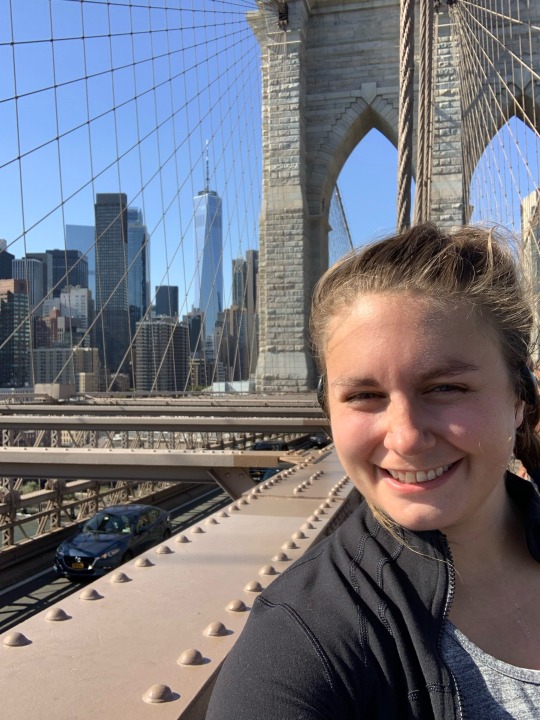

Then I spent a few days with my family and hiking Talcott mountain with the pups before heading back to Chicago to get ready for my upcoming move!
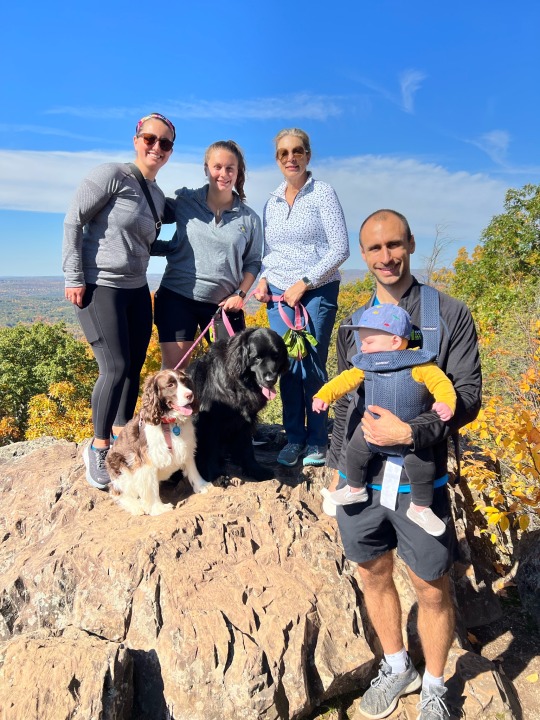
After my move, I had multiple weddings - Mikayla and Jake’s in Indiana and Kyler and Sarah’s in Chicago. Kyler and Sarah’s wedding weekend was such a blast with all the events and several close friends. And it was awesome to be local for it!

Then the next bout of travel began. I had 10 days in longboat key for thanksgiving and my moms 60th birthday weekend of events. We went on a family boat ride and my dad threw a party at the beach for all their friends.

After longboat key, I headed to San Francisco for a week long immersive course on brand advocacy for my graduate program.
I had a free day Sunday to explore before class started Monday so my friends Haley, Joanna, abbey and I all rented bikes and headed over to Sausalito to walk around and explore. It was a super cute marina town and it was nice to see again as I had gone there with my mom when I was 15. This time around, I stayed in the downtown area where all the offices are so we were close to class each day. The homeless situation there was pretty crazy, lots of mentally ill more so than Chicago. While I was there throughout the week, I explored marina district for dinner one night, did a run up to the painted ladies one morning before class, and walked around the salesforce park and area near the classroom. It was nice to have a week to “live” in a new city but i was so ready to get home after almost 3 weeks away at the end.

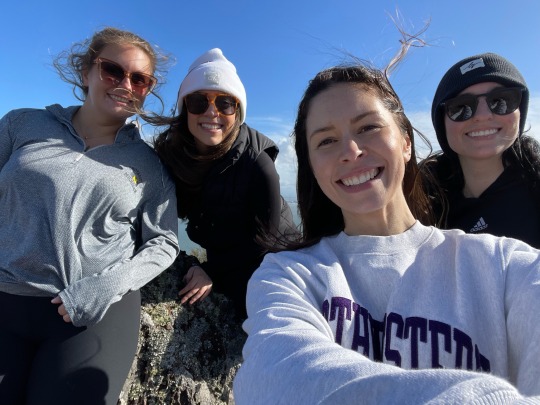

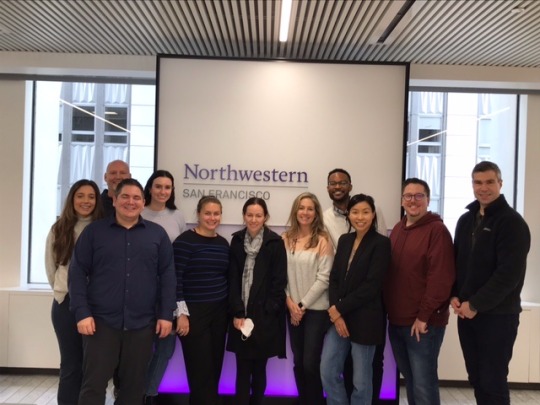
After that I had a work trip to Disney world and Christmas in Connecticut - nothing too new for those trips so I won’t go into detail.

0 notes
Text










13 notes
·
View notes
Text

heublein Tower Talcott Mountain Simsbury Connecticut October 6th 2022
@thethirdman8
24 notes
·
View notes
Text






Went hiking on my own for the first time yesterday (it was a cupcake trail, but I did it alone!!) and took some photos!!
11 notes
·
View notes
Photo

Heublein Tower, Talcott Mountain State Park, Connecticut
13 notes
·
View notes
Photo




Talcott mountain with hang gliders!
2 notes
·
View notes
Text
the world waking up, 2/2

(Used tobaal’s lightning in Ignis’ image and thesuper’s fire in Gladio’s image. Iris’ butterflies are ripped from FFXIV with some tweaks. Trees are from various CGtrader downloads.)
Awakening world fics under the cut!
Iris hasn’t been home in over ten years. Not since Dad called her after school to say he was staying at the office, and to remember to do her homework and mind Jared. And maybe to keep an eye on the news, just in case, but that he would be home before midnight. He promised. But he never did come home that night, and she never did finish her homework, and Jared ... Jared was executed in a Lestallum plaza long before the Long Night ever began, but somehow it all seems like one continuous thing -- one endless war that started with a phone call and hasn’t stopped yet....
Iris visits Noctis in Hammerhead, and it’s nothing like going home. She hugs the boys and they only panic a little when she cries, and Cindy breaks out the whiskey in celebration of the Dawn. But in the end, it’s easier to leave than to stay.
In Lestallum, a phone call from Gladio reveals that Cor is planning on giving her command of the Kingsglaive, and she promises to lead the next convoy to Insomnia to talk things through. Instead, she heads in the opposite direction. It seems right that she should head for Galahd, the land the mother she never knew loved so dearly. After a full day of driving, she parks and camps in an old haven, feeling both terribly lonely and terribly free. At first she thinks the lights have gone out, the old protection magics finally worn down, but after dark the truth is revealed. A flock of enchanted butterflies emerge from the branches of the old, rejuvenated willow she’s camped out beneath, light and safety emanating from their glowing wings. They fill the air, dancing and frolicking, and she imagines she can can hear an unfamiliar woman speaking through them. Calling her name. Calling her home.
~
Ignis insists on being the one to investigate the earthquakes. Gladio can’t leave the recovering and vulnerable King, and Prompto’s engineering expertise is needed to get the city up and running again. “Besides,” he adds, when Noctis still hesitates, “I would like to check for any useful herbs or spices in the area. I’ve been running low for ten years now.” So it is that he and Talcott meet up with a squad of Glaives escorting a cold, muddy, and thoroughly miserable convoy down the treacherous Leidan roads. He doesn’t have a chance to break out the monitoring equipment that night before a roar splits the air; merely alarming at first, and then as Ignis summons his blades from the Armiger, pitching over into deafening.
For the second time in his life, Ignis loses touch with one of his senses. Operating on pure, blind (ha) instinct, he drops his knives and summons his magic with all of his strength. Lightning favors him, and suits him as a replacement for his destroyed vision; he can gain an image of the world by interpreting the patterns of resistance and reactivity. Something sparks against his awareness, and he casts his attention and magic in it’s direction automatically. A truly massive creature is beneath the mountain -- no! It is the mountain? Or perhaps merely it’s shell---
Talcott breaks an elixir over him, bringing the noisy world back into sharp focus, but Ignis can’t pull himself away. The adamantoise seems to speak to him, flashes of a long life and bitter enmity with the wielders of the Armitage’s fire. But before he can even think to reply -- how would one even speak to such a creature? -- the lightning whispers back, soothing and wise, counseling patience, compassion, and calm. The ancient beast lets them off with naught but a rumbled warning; these are his lands now. And he will submit to no mortal king ever again.
~
Gladio never strays far from Noct’s side -- never will again, after everything that happened -- but they need people to monitor Cavaugh and the ruined areas of Insomnia, and with Cor and the other guys around it’s safe enough for him to volunteer. The regrowth near the Citadel is mostly maintained as the area is resettled, but the outlying boroughs are completely overgrown. It’s barely been ten months since Noctis returned, since the Dawn came back, and yet the site of the old Amicitia Manor has been turned into an autumn wonderland. There’s a half-grown oak sprouting right out of the damn foyer, for Six’s sake.
He feels a pang of regret at the loss of the old house, but damn, what would it have been like to grow up in a place like this? The grass, the flowers, the smell of the earth and the crisping leaves.... It’s been nearly ten years since he put up a tent under the setting sun, but he hasn’t forgotten anything. For a moment, he stands near the flames, letting them ease away the autumn chill, and looks out over the transformed world. It’s peaceful, he realizes with a pang of grief: this is peaceful, this is what peace was like. He’d nearly forgotten.
He closes his eyes, tips his head back, and listens as the fire crackles and the wind sings in the trees.
#ffxv#iris amicitia#ignis scientia#gladiolus amicitia#my art#my fic#im pretty pleased with how these three turned out!#the rain effect in iggy's pic was fun#and im definitely gonna abuse the godray effect i figured out for gladdy#i ended up losing my other version of older iris so i redid it#i like her a lot better with short hair
35 notes
·
View notes